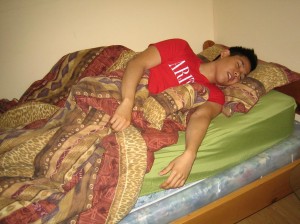Chilblains or pernio is a condition where the small blood vessels found under the skin becomes inflamed with sudden warming of cold skin. It is characterized by formation of blisters, redness, swelling and itchiness in the fingers, nose, toes and ears.
People suffering from poor circulation or sensitive to cold temperatures are susceptible to this condition. Chilblain subsides in a couple weeks but they can recur for years especially during the cold season.
Causes of chilblains

Chilblains happen due to a skin reaction to a severe change in the temperature such as warming up the hands directly over a fire or heater. The blood vessels found underneath the skin enlarges at an abnormal rate that cannot be handled by the larger blood vessels. This will cause the blood to back up, accumulate and leak into the neighboring tissues. Women are more susceptible to this condition which can recur without warning.
Symptoms
- Skin discoloration from red to bluish-purple
- Swelling
- Burning sensation
- Itchiness of the affected areas on the hands and feet
- Blistering
- Ulceration
Treatment
- When suffering from chilblains, elevate the affected area to increase circulation of blood in the area, lessen swelling, inflammation and pain. Affected hands and legs can be elevated by placing them on pillows. Sit in a high-back chair and bend the neck backward to keep the areas elevated. Another alternative is to wrap the body using a warm blanket and drink a glass of hot chocolate or a warm herbal tea to make the body adapt to the warm temperature.
- Once the body has already adjusted to the room temperature, massage the affected area using warm coconut or olive oil to increase the flow of blood in the area and lessen the risk of developing chilblains.
- Increase the intake of calcium in the diet. A deficiency in calcium puts one at risk for chilblains. Foods that are rich in calcium includes cheese, milk, soybeans, fortified soy milk and broccoli. In addition, take the prescribed calcium supplements.
- Perform exercises regularly for proper blood circulation in the area. Make sure to warm up before starting an exercise routine. Perform cardiovascular workouts and aerobic exercises such as jogging, walking, bicycling and swimming for at least 30 minutes every day.
- Dip the affected fingers in warm oatmeal porridge for at least a few minutes.
Tips
- To prevent further damage due to chilblains, keep the feet warm all the time by wearing full trousers, warmers for the leg, long wool socks or high boots.
- Avoid exposing the affected areas in direct heat after exposure to cold.
- Quit smoking to prevent any disruption in the blood circulation in the area.
- Wear thermal insoles to help keep the feet warm.
Disclaimer / More Information
The material posted on this page on chilblains is for learning purposes only. Learn to recognize and manage cold-related injuries by taking a first aid and CPR class with one of our training providers.
FACT CHECK
https://en.wikipedia.org/wiki/Chilblains
https://www.nhs.uk/conditions/chilblains/
https://www.mayoclinic.org/diseases-conditions/chilblains/symptoms-causes/syc-20351097

